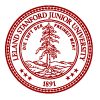Utilizing computers' strengths for computer music
The most thought-provoking part of Chapter 4 of Artful Design: Technology in Search of the Sublime, in my opinion, was the statement that computer music is best when it’s impossible to recreate acoustically. In other words, whenever anyone chooses to create computer music, they should be aiming to do something that justifies their choice. A computer is useful for programatically producing precise music, but adds little artistic flair of its own (unless you’re using the precision as part of the design of your piece). For example, a string quartet is usually going to sound better performed live on real stringed instruments than it ever will being performed by a computer program or even a DAW. There are ways to add expression to a performance, but this must be done manually and isn’t as organic as the on-the-fly embellishments real-life performers add.
This lesson from the text especially spoke to me because of my career goals; I aspire to be a music producer (either composition or mixing, mastering, or even sound effects) for video games. I wholeheartedly believe that by adding computer-generated effects to music in video games, I can enhance the experience by a lot. For example, I recently played a visual novel game—a genre in which you wouldn’t expect a lot of computer-generated music—and found myself really appreciating how the composer not only blended computer-generated sounds (whooshes, panning) with acoustic performances, but also took the game’s sound effects into account to make sure they wouldn’t stick out like a sore thumb when compared to the background music. This game made me appreciate what music designed to be produced with a computer could add to game music. Imagine the possibilities with computer-generated music in a more action-packed genre! For example, The Legend of Zelda: Breath of the Wild has sparse and quiet music while you’re exploring, but amps up intensity as you reach fights and more difficult terrain. Those sorts of changes are only possible using computers, and added an unfathomable amount to my experience of playing the game.
Calm scene from The Legend of Zelda: Breath of the Wild (sparse, calm music)
Intense scene from The Legend of Zelda: Breath of the Wild (fast, frenetic music)
However, even outside the scope of games, computer music sounds far better when it’s designed to take advantage of the strengths of computers. The most memorable computer music often makes great use of the enhanced rhythmic accuracy, pitch precision, array of sounds to use, and ability to add effects (panning, EQ, pitch shift, reverb, delay, etc.), while the least memorable computer music is made up of simple melodies that could have benefitted from the flair of an acoustic solo performer or ensemble. After digesting this chapter, I aim to take the medium I’m creating music with into account so that I can play to the medium’s strengths. I look forward to experimenting with designing computer music in the future in order to further improve my design.

